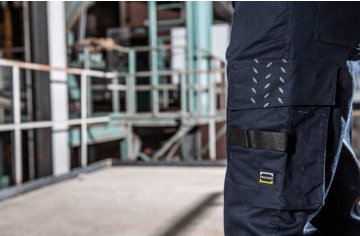We live in a linear economy. We extract raw materials, turn them into products and then pass them on to the consumer. After use, we throw the products away and they end up as rubbish.
Fortunately, there is a gradual transition towards a circular economy. We are slowly seeing the emergence of different initiatives to promote a greener future. However, ultimately, a piece of clothing cannot last forever, so what happens at the end of its useful life?
In this article I look at what is already possible in terms of textile recycling, along with a number of specific initiatives.

The facts
In 2018, the annual textile collection per person was approximately 8 kilograms.
55% of this is suitable for reuse (sale in second-hand stores or reuse in distant countries). There are no figures to demonstrate whether this level is actually achieved.
37% is suited to recycling: chopping into cloths or shredding.
Finally, 8% still ends up on the waste pile.
Textile recycling is a complex business
The recycling flow is very diverse since it involves many different variables: prints, logos, different compositions, accessories, etc. A high-quality recycling process requires sorting based on raw material, as different fibres must be processed in different ways (melting or dissolving). The easiest method is still to shred everything together and create fleece.
But why is glass recycling so effective?
The recycling process works well for glass. Why?
- Large volumes end up in the process.
- It is cheaper to use glass fragments than new raw materials. This also means that many companies invest in it.
- Few variants: coloured and uncoloured
- Many applications
What can I do with clothing to stop it ending up as rubbish?
First and foremost, it is important to choose high-quality clothing so that you can postpone the end-of-life moment for as long as possible.
These days, clothes are collected at the end of their useful life and then sorted for three main applications:
- Reuse
- Shredding and chopping fibres
- Energy recovery
Reuse
Choose a partner such as Havep Collect & Recycle or Gaia Circulair to manage the logistics of returns. Arrangements will then be made to collect your textiles. After collection, an initial selection criterium is whether the clothes can still be sold in their existing form.
Clothes whose fluorescent colour has become too dull or which are personalised with a company logo can be turned into something special.
It this interests you, take a look at the company Pōur. They turn used clothes into bags.

A fun and creative idea, but sadly on a small scale.
Such solutions certainly delay the moment when textiles end up as waste.
Shredding and chopping

Textiles that are no longer suitable for reuse are chopped into cleaning cloths, or shredded to weave into new thread or to produce fleece.
Shredding means chopping the textiles so small that the material returns to its fibre state. This activity does cause a significant deterioration in the fibre quality. These fibres are turned into insulation panels, for use in cars or in the building sector. In order to make new thread, new fibres are added to achieve the required quality.
Energy recovery
For clothing that can no longer be properly cleaned, the only option is incineration, whereby the heat is recovered. This is typical in the cement industry, a production process requiring plenty of heat.
What about the future?
As you can see from the above options, we currently lack 100% circular options. These are actively being sought.
Broadly speaking, there are 2 potential circuits: mechanical or chemical processing.
Mechanical processing
Mechanical processing can produce a good result where fibres are very long and strong. In the case of cotton, the resulting fibre is always weaker than new cotton. By blending this fibre with new cotton or other fibres it is possible to achieve useful thread. This explains why it is currently so popular to use them in insulation panels, where the strength of fibres is of no importance.
Chemical processing
In the chemical sector, fibres can be melted or dissolved. Fibres such as polyester can be melted down and then re-spun. Non-melting fibres can be dissolved in chemicals and then re-spun into good-quality fibre. In this way, fibres such as cotton or viscose can be re-spun into a new viscose-like fibre.
Here is a summary of several trial projects which hope to make it possible to turn textiles back into textiles in the future.



